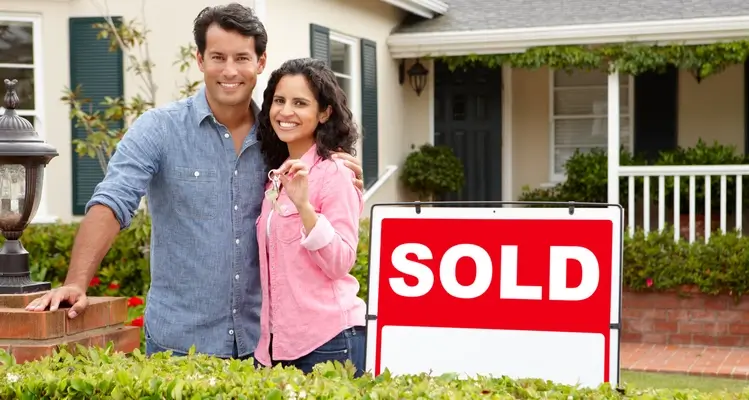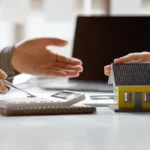If you recently sold a home that had a VA loan, you can typically restore your full VA loan entitlement by paying off the existing loan, gathering the right paperwork (like proof of payoff), and filing a specific VA form (VA Form 26-1880).
Once the VA processes your request—usually within 30 to 60 days—you’ll be back to your maximum VA loan benefit and ready to purchase your next home with 0% down.
This article will show you exactly how to do that, step by step. We’ll also tackle common pitfalls, share real-life examples from fellow veterans, and explain why restoring your entitlement is key to maximizing your hard-earned benefit.
What’s VA Entitlement Anyway?
VA entitlement is the amount the VA promises to guarantee on your mortgage, allowing you to buy a home without a down payment and without paying for private mortgage insurance (PMI). Your entitlement resets (or “restores”) once you pay off your existing VA loan and file the proper paperwork.
For veteran homebuyers, VA entitlement is like your golden ticket to a flexible, low-cost mortgage. The VA guarantees part of your loan for a lender, reducing their risk. Because of this backing, you can often buy a home with no money down, no PMI, and competitive interest rates.
Every veteran starts with a basic entitlement (traditionally $36,000), which covers 25% of a home loan up to $144,000. However, today’s full entitlement often allows for $0 down on loans far above $144,000, depending on the location and local loan limits. In 2025, you can typically borrow up to $806,500 with full entitlement in many parts of the country, although certain high-cost areas have even higher caps.
Essentially, once you use part of your entitlement to secure a VA loan, that portion remains “locked up” until you sell the home and pay off the loan (or have another buyer assume the loan and later pay it off). When your VA loan is fully satisfied, you can request that the VA restore your entitlement to its full capacity.
Pro Tip: Need more details on how VA entitlement works?
Check out our in-depth VA Loan Guide to learn about eligibility, loan limits, and more.
Why Restore Your Entitlement?
Restoring your VA entitlement ensures you have your full buying power for your next home. Without restoration, you might be left with only partial entitlement, limiting how much you can borrow with 0% down.
Let’s say you sold a home where you used your VA loan for a $350,000 mortgage. That loan consumed around $87,000 of your VA entitlement. If you don’t restore it, you could be stuck with a lower amount for future VA loans, meaning less buying power and potentially requiring a down payment. In a housing market where prices can rise quickly, especially in popular areas where veterans often relocate, you don’t want to be caught short when shopping for your new place.
Restoring your entitlement is a straightforward process, but it isn’t automatic. You must file the appropriate paperwork with the VA to officially free up your benefit. Once that happens, you regain your full privilege of purchasing a home up to the current conforming loan limit (or more, if you’re considering a jumbo VA loan option).
How Selling Messes With Your Entitlement
Even after you sell a home and pay off the VA loan at closing, your entitlement remains marked as “used” in VA records until you formally request restoration.
Selling your property with a VA loan doesn’t automatically reset your entitlement. Here’s why:
- Payoff at Closing: When you sell, the buyer’s funds pay off your existing VA loan. However, that payoff alone doesn’t trigger the VA to restore your entitlement. You must notify the VA.
- Assumption Scenario: If the buyer assumes (takes over) your VA loan instead of paying it off in full, your entitlement remains on the hook until the new buyer eventually pays it off or refinances. This can leave you in partial entitlement status for years, depending on the buyer’s actions.
For example, if you originally had $806,000 of full entitlement, then used $350,000 for your first VA loan, you effectively used around $87,000 of your benefit (25% of $350K). Even if your loan is paid off through the sale, your VA records won’t reflect “zero usage” until you file for restoration.
Full Entitlement vs. Partial Entitlement
Full entitlement means you have the maximum amount of VA loan guarantee available (e.g., $806,500 in 2025), while partial entitlement means you used some of your benefit. With partial entitlement, you’ll have a lower zero-down limit.
Think of your VA entitlement like a reserve fund. Every time you use a VA loan, you’re pulling from that reserve. If you’ve paid off your loan and restored your entitlement, you get back to 100%—which is your full entitlement. If you still have an active VA loan or haven’t restored after selling, you sit at a partial entitlement.
The difference is crucial when shopping for your next home. Full entitlement can get you a 0% down VA loan up to $806,500 (in most areas). Partial entitlement will limit how much you can borrow without a down payment.
How to Restore Your Entitlement: Your Game Plan
Short Answer: You’ll need to confirm your old VA loan is paid off, gather proof of payoff (like the closing document or a lender payoff statement), fill out VA Form 26-1880 online or by mail, and submit everything to the VA. Once approved, your Certificate of Eligibility (COE) is updated, and you’re back to full entitlement.
Here’s a more detailed five-step plan veteran homebuyers can follow to restore their VA entitlement:
- Prove the Loan Is Paid Off: Secure a payoff statement from your lender or a HUD-1/Closing Disclosure from your recent home sale. These documents show your old VA loan is fully settled.
- Round Up Key Paperwork: Collect your DD-214 (to verify your military service), the sale documents, and your proof of payoff. Getting organized now prevents delays later.
- File VA Form 26-1880: Access your eBenefits account or the VA’s official website to fill out VA Form 26-1880. Make sure to mark that you are applying for restoration of entitlement. If online submission isn’t an option, you can mail the form to your VA Regional Loan Center.
- Send It All to the VA: If you submitted the form online, upload the supporting documents. Otherwise, mail them with the form. Keep copies for your records.
- Receive Your Updated COE: After the VA reviews and approves your request—typically within 30 to 60 days—you’ll get an updated Certificate of Eligibility (COE). This document confirms your restored full entitlement.
Remember: Submitting incomplete information or missing documents can stretch a 30-day process into a 60- or even 90-day wait. Staying organized and filing everything at once is the best way to speed things up.
Entitlement Before and After Restoration
| Scenario | First Loan Amount | Entitlement Used | Remaining Entitlement Before Restoration | Remaining Entitlement After Restoration | Notes |
|---|---|---|---|---|---|
| $350K Paid Off | $350,000 | $87,000 | $719,000 | $806,000 | Full restoration after the loan is paid off. |
| $500K Assumed | $500,000 | $125,000 | $681,000 | $681,000 | No restoration as the loan is assumed, not paid off. |
| $200K Paid Off | $200,000 | $50,000 | $756,000 | $806,000 | Full restoration after the loan is paid off. |
Note: These figures assume the 2025 standard full entitlement amount of $806K, which may vary in high-cost areas.
How Much Time and Money Are We Talking?
Short Answer: Restoring entitlement usually costs nothing (other than possible fees if you need to replace lost documents). Expect it to take about 30 to 60 days, depending on how quickly you gather paperwork and how busy the VA is.
The good news for veteran homebuyers is that filing the necessary form is free. If you’ve misplaced your DD-214 or other vital records, you might spend $50–$100 to order replacements from the National Archives. The timeline can vary:
- 30–60 Days Typical: Many veterans wrap up the entire restoration process within a couple of months—sometimes faster if everything’s submitted online and fully documented.
- Potential Delays: If your payoff wasn’t properly recorded, or if you’re missing key paperwork, you might face a 90-day wait. Planning ahead is key so you’re not scrambling when house hunting.
What If the Loan Didn’t Get Paid Off?
Short Answer: If a buyer assumed your VA loan, your entitlement stays tied up until that buyer eventually pays off or refinances the mortgage. You can’t fully restore your entitlement until then.
In some transactions, the new buyer assumes your existing VA loan rather than getting a new loan. While assumptions can help you sell your property faster or on better terms, they have a major downside: your entitlement remains partially used until the new owner completely pays off the loan.
In this scenario, you have a couple of options:
- Wait It Out: If the buyer eventually refinances or sells the home, your entitlement gets freed up. This is a waiting game that can last months or years.
- Seller-Buyer Agreement: In some cases, you can negotiate with the buyer to refinance under their own VA eligibility (if they’re a veteran) or switch to a conventional loan after a certain period. This can be tricky and isn’t always guaranteed.
Restoration Costs and Timelines
| Step | Cost | Time | Notes |
|---|---|---|---|
| Prove Payoff | $0 | 1–3 days | Lender or closing statement |
| Get Docs (DD-214, HUD-1) | $0–$100 | 15–30 days | Replacement fees may apply |
| File VA Form 26-1880 | $0 | 10 min (online) | Faster through eBenefits |
| VA Review | $0 | 30–60 days | Mailing documents takes longer |
| Receive New COE | $0 | 7–14 days | After approval |
Real-Life Wins and Hiccups
Many veterans have successfully restored their entitlement within a month or two. The biggest hurdles usually come from missing documents or dealing with a buyer who assumed the loan but hasn’t paid it off yet.
Here are a few examples:
- The Smooth Sale: A veteran sold his $250,000 home, paid off his VA loan, immediately filed VA Form 26-1880 online, and received his new Certificate of Eligibility in about 40 days. He then bought a larger $450,000 home with no down payment.
- The Assumption Delay: Another veteran’s $500,000 loan was assumed by the buyer. Because the loan is still active under the veteran’s entitlement, he remains at a partial entitlement of $681,000. He has to wait for the buyer to refinance or pay off the mortgage to restore full entitlement.
- Lost Paperwork Saga: One veteran misplaced the HUD-1 statement. He spent weeks tracking it down, causing a 60-day delay. Once found, he quickly filed for restoration and purchased a new $350,000 home. The lesson? Keep your closing docs in a safe place.
Why Restoring Entitlement Is Worth the Effort
Full VA entitlement can save you thousands of dollars by allowing for a zero-down mortgage and no PMI, plus potentially lower interest rates than conventional loans.
When you’re ready to buy your next home, the difference between partial and full entitlement can be significant. With full entitlement—up to $806,500 in 2025 in many areas—your options expand greatly:
- Zero Down Payment: While many conventional loans require at least 5% down (and 20% to avoid PMI), a VA loan typically doesn’t require you to bring cash to closing for the down payment.
- No Private Mortgage Insurance (PMI): PMI can run $100–$200 a month on a typical loan. Over the life of a mortgage, avoiding PMI can save you thousands.
- Competitive Interest Rates: VA loans generally feature lower interest rates than conventional loans. A small difference in rate can reduce your monthly payment substantially.
According to VA statistics, nearly 43% of veteran homebuyers use a VA loan each year—and with good reason. Restoring your entitlement keeps you in the best position to leverage these valuable benefits whenever you decide to purchase again.
FAQs About Restoring Entitlement After Selling
How do I restore my entitlement after selling a home?
Once you sell your home and pay off the VA loan, file VA Form 26-1880 online or by mail with proof of payoff. In about 30–60 days, you should get your updated Certificate of Eligibility (COE), reflecting your full entitlement (e.g., $806K in 2025).
Can I restore entitlement if the buyer assumed my VA loan?
Not immediately. If someone assumed your loan, your entitlement remains in use until that buyer fully pays it off or refinances. You’ll have partial entitlement until then.
How long does it take to restore VA entitlement?
On average, it takes 30–60 days. However, missing documents can extend this to 90 days or more. Filing online and submitting all required paperwork up front usually speeds the process.
Does restoring entitlement cost money?
There’s no fee for filing. You might pay $50–$100 if you need to replace lost records, like your DD-214, through the National Archives.
What if I don’t restore my entitlement?
You’ll have partial entitlement. For example, after using $87K on a $350K loan, you’d be stuck with $719K of entitlement. This could limit your zero-down options on your next VA loan.
Can I use a jumbo VA loan after restoring?
Yes. Once your full entitlement is back, you can use a VA loan for amounts above $806K by following jumbo VA loan guidelines. Typically, you’ll need a down payment on any amount over the local limit.
What documents do I need to restore entitlement?
You’ll need your DD-214 (showing honorable discharge or general discharge under honorable conditions), proof your old VA loan is paid off (a payoff letter or HUD-1), and the completed VA Form 26-1880.
Will restoring entitlement let me buy again with no down payment?
Absolutely. That’s the primary benefit of restoring. With full entitlement, you can often purchase up to $806K (or more in high-cost counties) without any down payment.
What happens if I sold but still owe on the loan?
If there’s a remaining balance after the sale, your entitlement remains partially used until the loan is completely settled. Once it’s fully paid, you can apply for restoration.
Can I restore entitlement more than once?
Yes. Every time you sell and pay off a VA-backed loan, you can restore your entitlement, provided you file the necessary paperwork. Some veterans have done this multiple times over their lifetime.
Key Takeaways for Veteran Homebuyers
- Restoring your VA entitlement after selling a home is essential if you want to maximize your buying power for your next property.
- The process involves proving your prior loan is paid off, filing VA Form 26-1880, and submitting any supporting documents.
- Expect about 30–60 days for the VA to approve your request and issue a new Certificate of Eligibility, but plan for potential delays if documentation is missing.
- If someone assumed your VA loan, your entitlement remains partially in use until that loan is fully repaid or refinanced.
- Once fully restored, you regain the option for a 0% down mortgage and no PMI, saving you thousands over the life of your next loan.
As a veteran, you’ve earned the right to take advantage of these powerful home loan benefits. By restoring your entitlement, you can keep using the VA loan program as many times as you need.
For more guidance on VA loans, benefits, and homeownership tips tailored to servicemembers and veterans, explore our
VA Loan Resource Center or visit the
U.S. Department of Veterans Affairs website for official updates and policies.
















